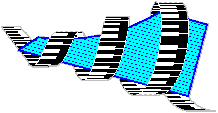
 |
PCH Publishing |
Home | Index | Harpsichord Solo and Duet Editions | How to Order | Email
|
|
Bernardo Storace (17th century) View a sample page. |
PCH-3 ii+38 pp. $13.50 | ||
Passacaglias and Chaconnes...is there any baroque fan who doesn't enjoy them? This edition is a product of my own attraction to these hypnotically cyclical forms.
All that is known about Bernardo Storace comes from the elegantly decorated title page of the volume that was the source of these Passacaglias. He was the Vice Maestro di Cappella to the senate (ruling nobility) of Messina. The volume, printed in Venice in 1664, is his only known work. The original is a masterfully produced engraving. Page 19 of this edition shows an example, namely the page containing the end of the set in a and the beginning of the one in c. I have followed the conventions of the original as far as I felt was practical. The passacaglias occupy 28 consecutive pages out of a total of 100. They are presented here in the original order.
Staves. The lower staff had 7 lines with middle C the second one down; the upper, six with middle C the lowest. I changed these to conventional 5-line staves with bass and treble clefs. However, I've adhered to Storace's consistent division of notes between the staves according to which hand it to be used.
Beaming. There are no explicit articulation or phrase marks in the original, but the beaming (or lack thereof) almost certainly conveys messages about both, so it is reproduced verbatim.
Rests. Storace didn't account for all the time in the secondary lines. When he did use rests, they usually served one of two definite purposes, either to provide a bridge between a main beat and a delayed entrance, or to suggest when to get one hand out of the way to make room for the other. I saw no reason to add or delete any rests.
Key signatures. The sets in a and c stay in the same key throughout, while the others modulate several times, not returning to the original key. In many cases Storace used one fewer sharp or flat than we would today. In addition, in more distant keys he also omitted the b-flat or f-sharp from the signature. I adhered to the first anachronism but not the second.
Accidentals could appear above, below or to the left of a note. Sometimes when above or below, the mark was horizontally centered between two notes and apparently applied to both. Aside from that curiosity, Storace use the standard conventions of his time: accidentals only applied to the next note (unless it was repeated), and they are relative, so for example a flat on a note that is sharped in the key signature is equivalent to a modern natural. While this is more logical in many ways than the modern method, I felt it was too unfamiliar to keep, so all accidentals have been converted to the modern convention.
Editorial additions. Editorial accidentals are situated above the staff, with or without a question mark depending on the degree of certainty. There are also cautionary accidentals (in parentheses) in places where as I played I felt a tendency to go wrong. In a very few spots there seemed to be notes missing; I added my suggestions as very small notes.
Timing. In the belief that esthetics and fidelity outweigh any possible discomfort due to unfamiliarity, I've retained three anachronistic features of the original that are related to timing. (1) All these pieces have bar lengths that are long by later standards. Although some editors would split bars in half, this would bisect many hemiolas. Also, to me, the long bars are reminders to conceive of the music in the largest possible groups. (2) In some sections, Storace used only open note heads, so for example what we would call a quarter note looks like an eighth note but with an open head. This notation suggests to me a smoothly flowing quality, and it is possible that it could imply something about the tempo. (3) The time signatures would not be correct by modern standards, but again may contain information about tempo.
Page turns. I looked for places where all notes could be played in one hand. I couldn't find enough to have one every two pages. But I did find at least one possible spot every three pages or less, and adjusted the score layout accordingly. For performance I suggest making a photocopy, taping pages back-to-back and/or side-to-side, and arranging them in a 3-ring notebook so that either 2 or 3 pages are visible at a time, each group ending with one of the feasible page turns. The "good" spots are at or very near the ends of pages 2, 5, 7, 13, 15, 21, 23, 25, 28, 33, and 35.
It is a pleasure to have become acquainted with these superb works, and a priviledge to present a personal edition of them, for anyone to play.
Don Simons
Redondo Beach, May 2000
Top | Home | Index | Harpsichord Solo and Duet Editions | How to Order | Email